


 |
August 20-22, 2017: Our Trip to See the Total Solar Eclipse |
 |
June 1-4, 2017: A Visit to Istanbul, Turkey |
 |
Return to the Index for 2017 |
This Fourth of July, Fred and I are heading down to San Antonio to spend the holiday with Prudence and Ron (and Guy, Nancy, and Karl, of course).
Getting to the Ruckman's House in San Antonio
On the maps below, you can see the route to the Ruckmans' house. It is an easy matter to simply hop on I-35E from the Tollway in Dallas and take that highway all the way south through Austin to San Antonio. This 280-mile trip routinely takes about 4.5 hours. In San Antonio, we continue to follow I-35 into the city, eventually exiting onto San Pedro Avenue. We take that north about two miles, and either hang a left on Ashby and a right on Breeden or just a left on French to get to the Ruckmans' house on the northeast corner of Breeden and French.
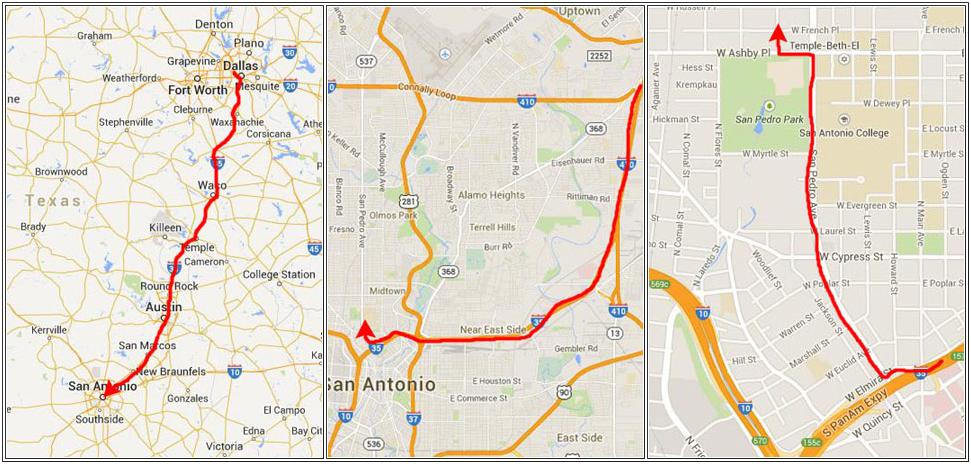 |
In case you have not seen them, I have put below first an aerial view of the Ruckmans' house (it is the house on the corner and the garage/apartment building north of it where Guy lives) and a front view of the house (taken in 2010).
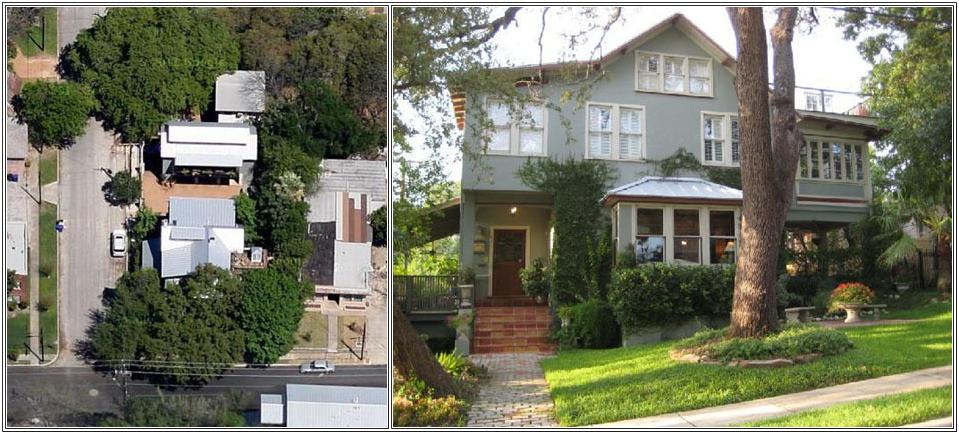 |
For this holiday, Ron Ruckman is doing a cookout, and we will all be contributing a dish or two. As it turned out, our major excursion while we were here was over to the Witte Museum, an attraction that we haven't been to in a while. On the evening of the third, Guy cooked a meal for us and we ate in his apartment- recording the occasion with a couple of pictures:
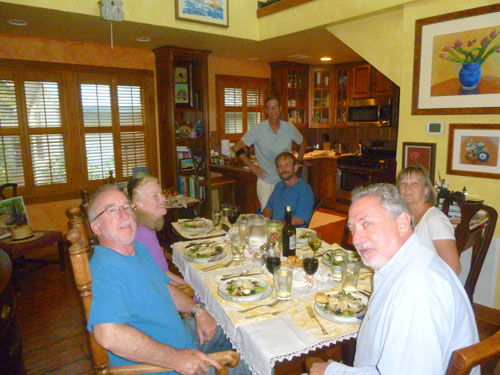 |
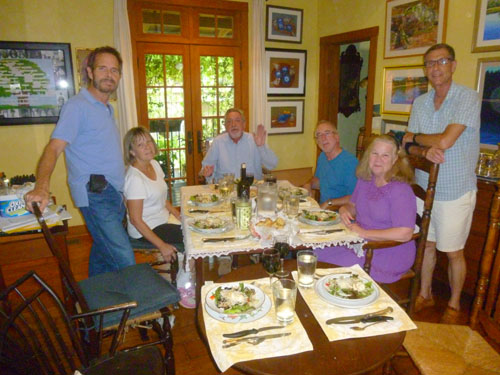 |
A Visit to the Witte Museum
|
Botanist and high school teacher Ellen Schultz began her goal of starting a museum for the growing city of San Antonio in 1923. She began fundraising to acquire the well-known H.P. Attwater natural history collection the same year, forming the San Antonio Museum Association, and organizing to raise funds to acquire the collection. She and other civic leaders were successful, and the natural history collection was purchased and installed at Main Avenue High School on October 8, 1923.
San Antonio businessman Alfred W. Witte died September 22, 1925, leaving $65,000 to fund a museum in Brackenridge Park. The gift was unexpected and the members of the San Antonio Museum Association went to work with the mayor and an architect on the new museum- which would be named for Witte’s parents. The site chosen was the location of the original Spanish Acequia Madre de Valero, and the Witte Museum opened in 1926. From its opening through the 1930s Ellen Schultz Quillin managed the museum, using its small operating budget wisely to add paintings and historical artifacts to the collection. Some of the Museum's most important pieces were acquired during this period.
Throughout the 1930s the Witte Museum became a gathering place for artists, researchers, scholars, and the general community; events to raise money were scheduled and became increasingly popular, as were the art classes taught by some of the most important artists in the area. Many now well-known Texas artists took their first art lessons at the Witte Museum. The Museum also began supporting archeological research in the canyons of the Lower Pecos area and the almost inaccessible areas of the Big Bend. The efforts led to the building of new galleries at the Witte, expanded financial support, and important additions to the collections, now the finest of their kind in the world.
|
In 1960, the size of the museum was increased by 60% and a new, modern entry was added. The “modern” Witte Museum was dedicated in November of 1960, just before Ellen Schultz Quillin retired, assured that the Witte Museum was grounded in the community with fine collections and a bright future.
The Museum continued to expand, adding the McFarlin Jewel Room, the Piper Wing, and one of the Witte Museum’s most important galleries- the Lone Star Hall of Wildlife and Ecology. In the 1970s an important focus on decorative arts was initiated by the curator, and through the next thirty years the Witte Museum brought in numerous traveling exhibits and continued to create its own exhibits drawn from its growing collection; two popular ones are "Texas Wild" and "Ancient Texas", both installed in the 1980s.
In 1994, the exhibition Thundering Hooves: 500 Years of Horse Culture in the Americas, opened at the Witte and later traveled throughout the United States. Other exhibits aimed at schoolchildren opened in the last part of that decade.
|
A major addition, The Robert J. and Helen C. Kleberg South Texas Heritage Center opened in the historic Centennial building next to the original Witte Museum in 2012. The facility stands as a permanent home for exhibits of the history and art of Texas utilizing the latest museum practices and technology.
A new director led the transformation of the H-E-B Science Treehouse into the H-E-B Body Adventure that opened in 2014 as the first interactive health experience in the United States. The Witte also opened the Morton Research and Collections Center in 2014 to display the more than 300,000 artifacts in visible storage, as well as offer space for scholars, archivists and school children to have close encounters with the still growing collection. The Center has a beautiful balcony at the north end overlooking the San Antonio River.
Numerous other galleries and spaces opened in 2016 and even earlier this year, and now the campus of the Museum encompasses buildings housing a quarter million square feet of exhibition space, event spaces, research areas, collection storage, and offices.
From the parking garage, we walked around the south side of the complex and then across the street to the new museum entry that faces Broadway, and then headed in to the Museum proper. Entering the Witte, you used to come into a fairly cramped ticket area, but the new entry, totally renovated five years ago, is now a bright, open space with a large ticketing desk and a huge dinosaur skeleton as its centerpiece.
|
(Mouseover Image Above for Video Controls) |
|
Towards the back of the entry hall, there was a particularly colorful cowboy-themed mural.
So how best to organize the pictures we took? This time, rather than giving you thumbnail after thumbnail to click on, I am going to organize our pictures into a large slideshow. This will enable you to move through the pictures rapidly, but still allow me to insert information about the gallery or exhibit involved.
|
|
As with all of the slideshows in this album, you can use the little arrows in the lower corners of each image to move from one to the next, backward or forward. You can track your progress through this large slideshow by referring to the index numbers in the upper left corner of each image.
I hope you find this method of organizing the pictures we took here at the Witte today logical and easy for you to navigate quickly, and we hope you enjoy walking through the Witte with us!
I have not spent this much time in the Witte before; I actually thought it was more of an art museum, so I was pleasantly surprised to find that almost all the actual art was in the Arpa temporary exhibit. There was one of his paintings that was so wide that putting it in the slideshow would have detracted from its impact:
|
One major exhibit we visited was the Kittie West Nelson Ferguson "People of the Pecos Gallery" where the focus is on the prehistoric hunter-gatherers of Texas who embraced their bountiful, natural environment. The gallery was dimly-lit, and so I didn't take very many good photographs. Spanning the entire second floor of the New Witte, the gallery provides a unique look at a fascinating culture. There are life-sized recreations of ancient camps showing how people of thousands of years ago hunted, cooked and socialized.
|
|
(Mouseover Image Above for Video Controls) |
Before I headed back downstairs to the entry, I stopped on the second-floor balcony to look over the entry hall. I took a series of pictures to put together into this panorama:
|
We left the Witte a couple of hours after we arrived, passing an interesting dinosaur sculpture as we headed back to the garage.
The Rest of Our Visit
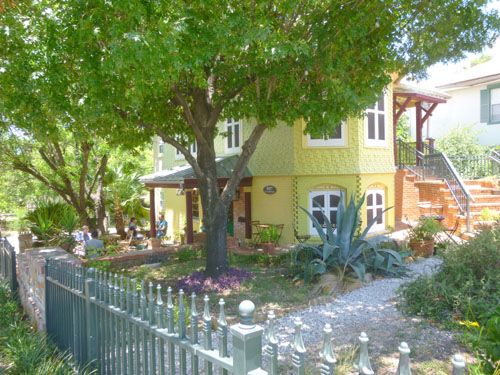 Scratch Bakery and Eatery |
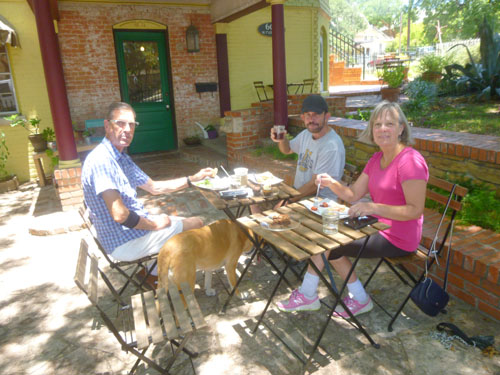 Guy, Fred, and Prudence (and Jax, too) at "Scratch" |
And, as we often do, we had one dinner at Ron and Prudence's favorite Mexican restaurant, "Paloma Blanca":
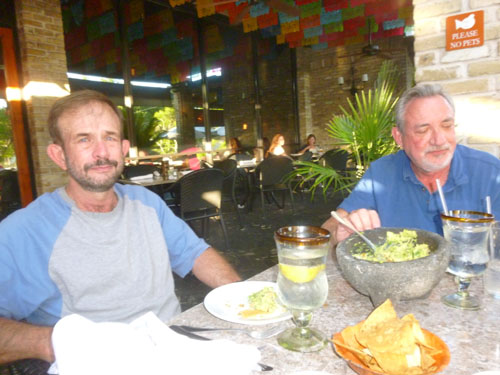 Fred and Ron |
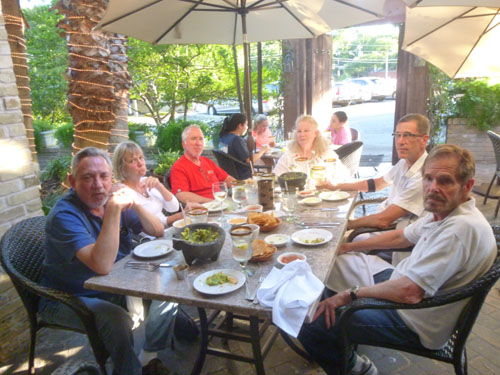 Everybody But Fred |
We very much enjoyed spending the Fourth of July with Ron and Prudence; perhaps it will become a yearly tradition!
You can use the links below to continue to another photo album page.
 |
August 20-22, 2017: Our Trip to See the Total Solar Eclipse |
 |
June 1-4, 2017: A Visit to Istanbul, Turkey |
 |
Return to the Index for 2017 |